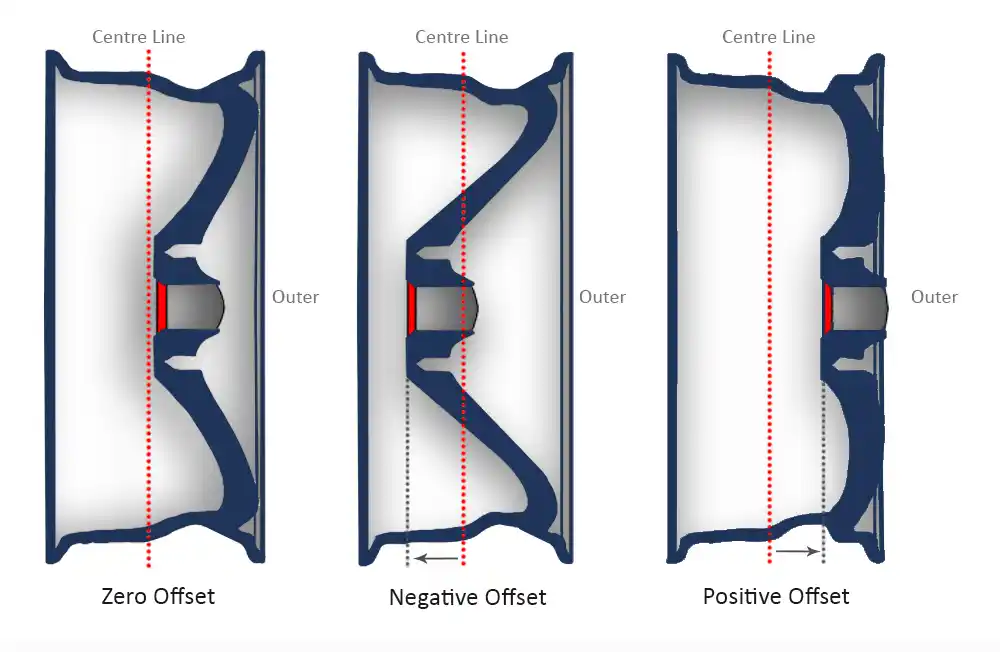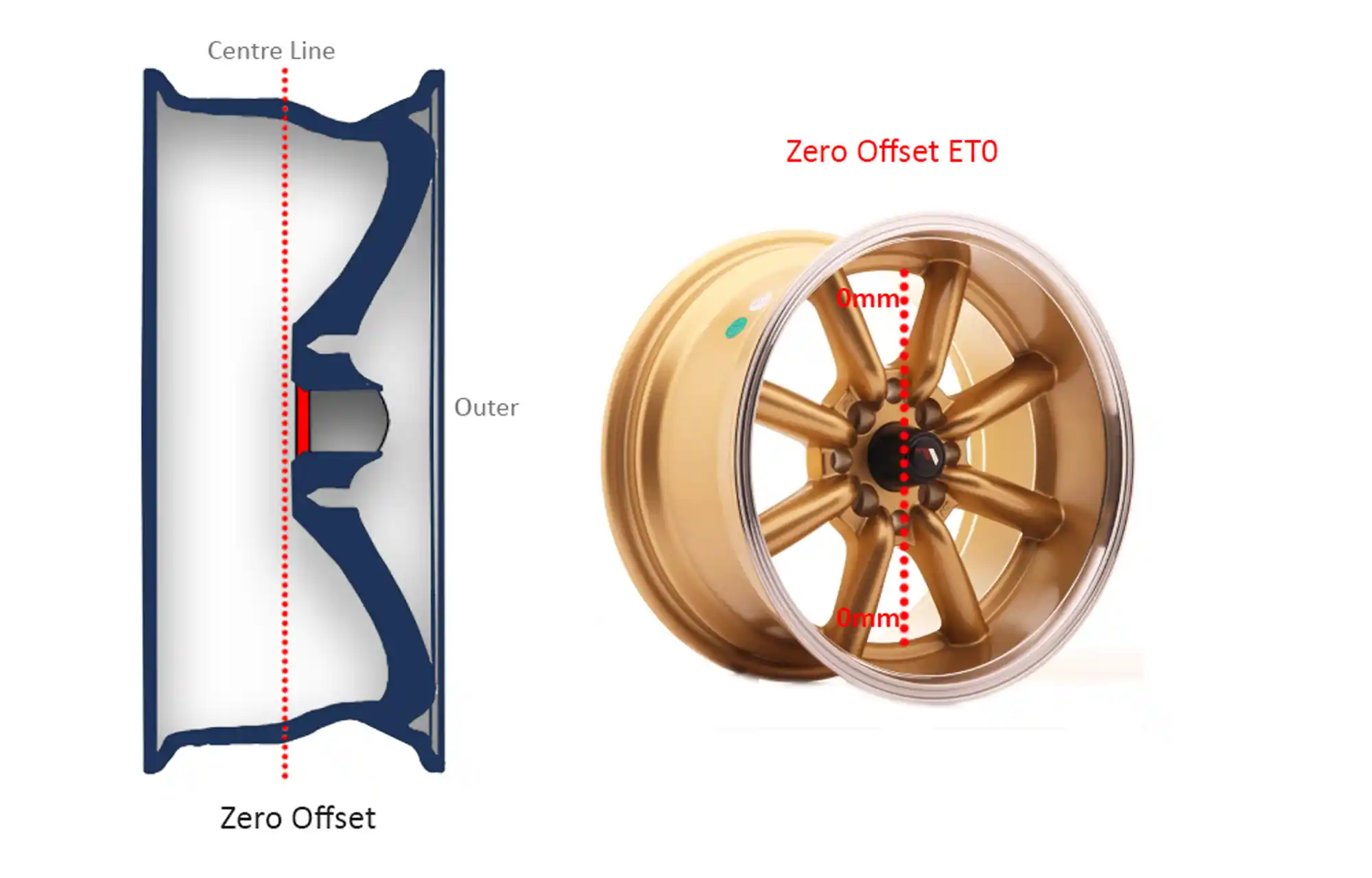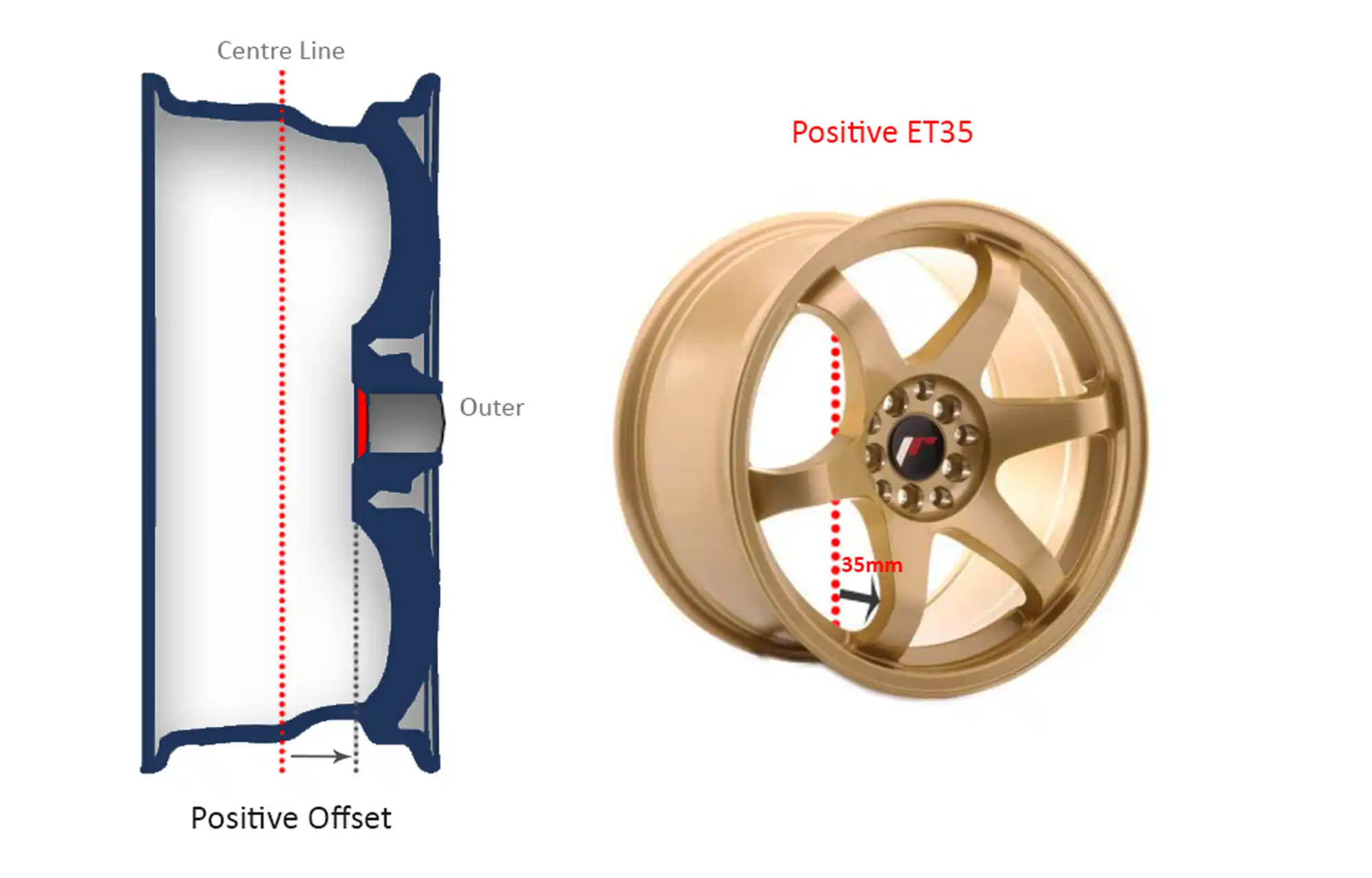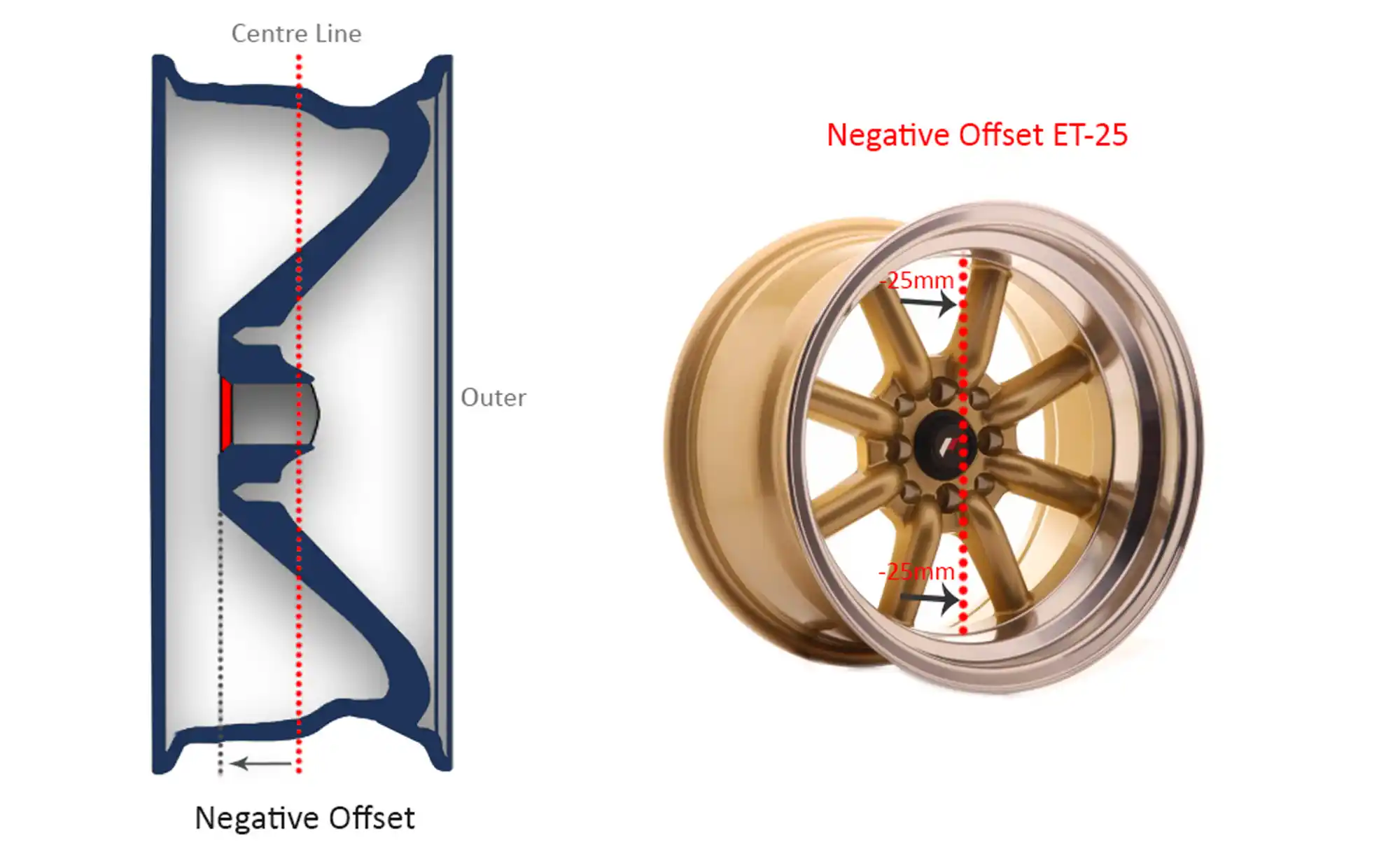We get questions everyday, we've slacked but what we want to do is provide as much information to our community as possible. One of those questions we get daily include: what wheels would fit my mustang? What is the best offset for my mustang?
Few things, lots of wheel will fit your mustang however... will they look good? Will these wheels stick too far out or too far in? That's where wheel offsets come into play, wheel offset determines how far your wheel either sticks our from the hub, or far in.
There are three different types of offset: negative offset, positive offset and zero offset.
- Zero wheels offset occurs when the hub mounting surface is parallel to the wheel’s centerline.
- A positive wheel offset refers to the hub mounting surface being in front of the wheel’s centerline.
- A negative offset refers to the hub mounting surface being behind the wheel’s centerline.

Basically, zero or neutral offset is when the wheel’s mounting face is perfectly in line with the center line of the wheel. This means that they both line up and there is zero offset difference between the wheel itself and the wheel arches – zero offset wheels are often referred to as wheels with ET0.

Positive offset is when the mounting face is in front of the center line of the wheel. Looking at the wheel straight-on from the front, wheels with positive offsets tend to have a flat style or occasionally a small dish or a slight concave shape to the wheel spoke. This is the most common offset for Mustangs due to both, fender width, suspension width and brake caliper size. A typical 20x10 front and 20x11 rear mustang fitment for a monoblock wheel (cast, flowform or forged) will be around 30-35 positive offset front and 45-55 positive offset rear.

Last but not least, wheels with a negative offset have the mounting face located behind the center line of the wheel. This can mean that the mounting face of the wheel sits much further into it. Viewed from the front, these wheels often look very aggressive fits with lots of concave or extreme dishes. Negative offset wheels can add much undue stress to a vehicles suspension with the decreased steadiness. 
It wouldn't be right if we talked about offset but didn't talk about its older cousin, backspacing.
WHEEL BACKSPACING
Backspacking is an older system of measurement, backspacing is the distance from the mounting surface to the back of the wheel (where the wheel mounted to the car). Like offset, your vehicle’s geometry, suspension and brakes determine your wheel’s backspacing. But the great thing is they tried to make it difficult by using millimeters to measure offset and inches to measure backspacing. The correct backspacing is really important when determining what will be enough room for the suspension, brakes and steering systems to operate without interference from the wheel. Remember, there’s a direct link between backspacing and offset. A positive offset creates more backspace, while a negative offset reduces backspace. A negative offset typically doesn't work with larger brakes whereas a more positive offset and spoke design will allow for some gigantic brakes!!
So a rule of thumb for mustangs:
- A mustang it typically always going to be a positive offset (unless you like major camber with crazy stances)
- Spoke design plays a major part in whether or not they'll clear brakes
- S550 Mustangs can run a much more aggressive fitment than S197's.
- Staggered fitment on mustangs are most typical
- Square fitments are possible however, depending on brake size will require a spacer or for different offsets to be ran from front to rear.
S197:
We've ran typically a 9-10.5" wheel in the front and 9.5-11" wheel in the rear. In the front a 9.5 with 33mm offset sits about perfect and a 9.5 with 30mm can give you that slight poke some enjoy. A 10.5 with a 45mm offset in the rear sits perfect however, you will have poke depending on the tire you decide to run. Keep in mind that in there are 25.4 mm in every inch. So if you're running a 20x10 rear wheel with a 33mm offset in the rear and you decide to run a 20x11, you typically want to add 25mm so now you're looking at 58mm in the rear.
S550:
We've ran typically a 10-10.5" wheel in the front and 10.5-11" wheel in the rear (this is solely a GT model, Shelby models have more clearance and can run more aggressive front and rear). In the front a 9.5 with 25mm offset sits about perfect and a 9.5 with 20mm can give you that slight poke some enjoy. A 10.5 with a 45mm offset in the rear sits a little more recessed on the S550 however, I still find a 45 does look good. For example purposes, HRE FlowForm wheels a set of FF04's come in standard 20x10 35mm positive offset front and 20x11 with a positive 50mm offset in the rear. I found this to fit very wheel on the S550 Mustang GT's however, they could actually be slightly more aggressive in the front and I wouldn't mind seeing a 30mm offset. These wheels aren't BESPOKE so I completely understand the sizing and offsets they chose.
Tire size:
I wanted to quickly touch base on tire sizing for a minute. Bigger isn't always better. If you're running a stock 19x9 or 19x9.5 rear tire, there's no need to slap a 305/35 tire on there. You're essentially not using the entirety of the tires tread. There's also a bulge in the tire that can create an unsteady tire for your car. Here's what I found to be a happy medium.
9" wheel: 255 width tire up to a 275 width tire.
9.5" wheel: 275 is perfect, like perfect, flush sidewall.
10" wheel: 285 is dang near perfect
10.5" wheel: 285 for slight stretch and 295 for perfect fitment
11" wheel: 305 up to 315 depending on tire height. We've ran a 315/30/20 on a 20x11 with great luck. Also keep in mind of tire brands. Some brands actually run larger than others.
Lastly: Bolt Pattern and Lug Thread Pitch for S197 and S550
Bolt Pattern: 5x114.3 lug pattern for both platforms
Lug size and thread pitch.
S197: 1/2"x20
S550: 14x1.50
I didn't go into much detail on tires, just a quick guide and rule of thumb I follow. I've literally done thousands of wheelsets from different brands and different tires, all fit slightly different than the other.
There are so many wheel options and manufacturers out there that I would be silly if I tried to name them all but a few of our popular ones are:
BC Forged wheels
Forgestar wheels
Weld Wheels
Velgen Wheels
Vertini wheels
HRE FlowForm Wheels
CCW Wheels
VS Forged wheels
Stance Wheels
Ace Alloy Wheels
Racestar Wheels
Niche Wheels
Fuel Off Road Wheels
Venomrex Wheels
